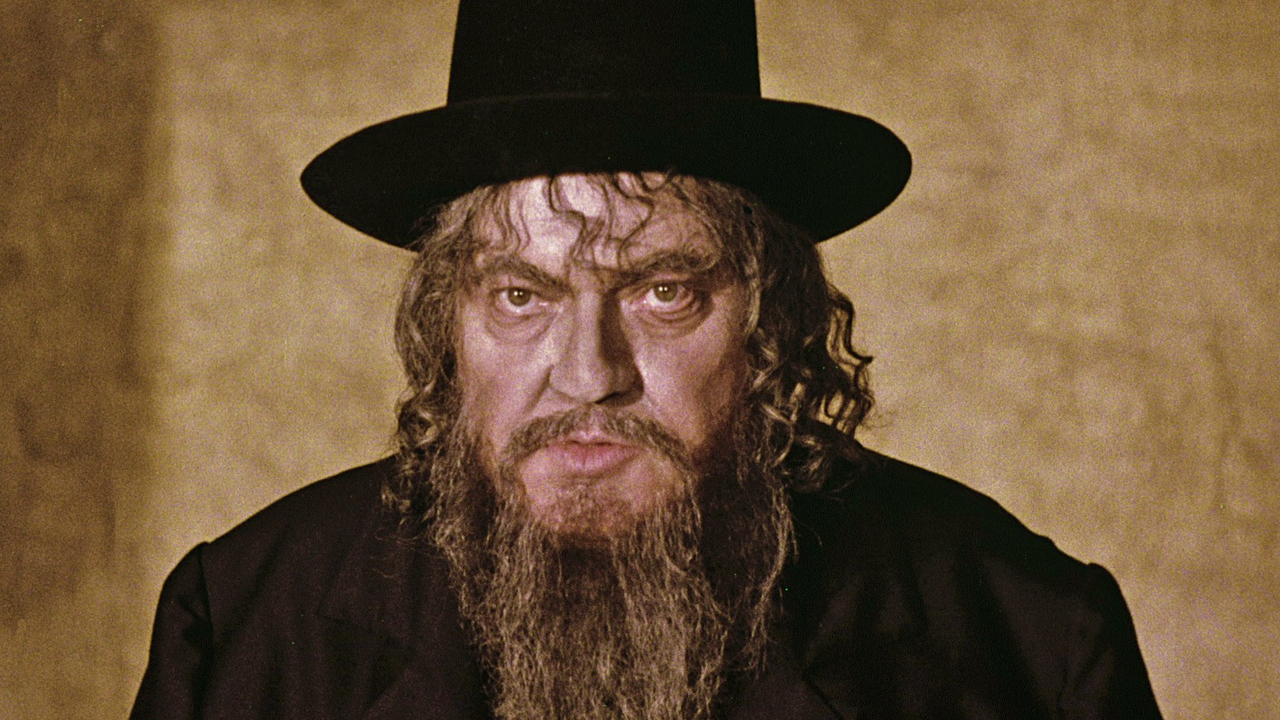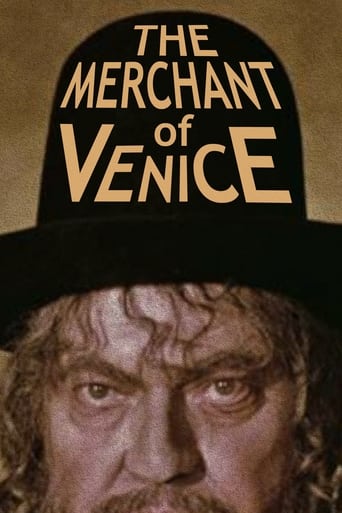

Sadly Over-hyped
... View MoreClever, believable, and super fun to watch. It totally has replay value.
... View MoreThere's no way I can possibly love it entirely but I just think its ridiculously bad, but enjoyable at the same time.
... View MoreActress is magnificent and exudes a hypnotic screen presence in this affecting drama.
... View MoreThe Munich Film Museum has assembled the bits and pieces of Orson Welles' TV production of "The Merchant of Venice" into a 40 minute feature. The result feels like a Welles film, albeit one assembled like the jigsaw puzzle Susan Alexander Kane completes in "Citizen Kane."Welles intended this piece to be part of his potpourri TV show "Orson's Bag," and when that project fell through, part of a film to be called "One Man Band." Snippets of the film appeared in "Orson Welles, the One Man Band" which was released over two decades ago. Like most of Welles' independent work, "Merchant" was fraught with problems. The original negative vanished and has yet to reappear. The end of the play was not filmed; most of Shylock's famous monologue also was lost. Welles hired Senta Berger to play Portia and then, as was his wont with the Bard, wrote her character out of the piece. The action focuses on Shylock's troubled relationship with his daughter Jessica and his negotiation with Antonio for a loan of 3000 ducats with the collateral a pound of Antonio's flesh.Much of the sound track is missing, but fortunately the Mercury Theater had made a recording of Welles' edit of the play circa 1938. So the restorers substitute the Mercury recording for the missing sound as needed. Actors' voices change, as does the timbre of Welles' instrument, but it matters not. In fact, given Orson's penchant for looping dialogue in his other films, particularly "Macbeth," "Othello," and "Touch of Evil," the substitution seems apropos. The modern editing was aided greatly by the discovery of annotations by composer Francesco Lavagnino, who had worked twice before with Welles. His score, as usual, is superb.The visuals are typical Welles. There are echoes of his earlier films, like "Mr. Arkadin," "The Trial," and "Touch of Evil." As Shylock leaves the ghetto and trudges off to dinner with Antonio, he is shot from behind like Hank Quinlan. Shots of the Jewish ghetto are inter-cut with shots of the well-to-do part of town, a counterpoint reflecting Welles' lifelong sympathy for the underdog, in this case Shylock.All comedic elements of the play have been ruthlessly expunged. Perhaps shooting this film less than a quarter-century after the Holocaust kept Welles from making the Jewish protagonist a true villain. Indeed, it is not clear from what is shown that Shylock is not the hero of the story. The only negative we are told is that his daughter hates him.What Welles planned for the denouement is a mystery. The restoration ends with Welles' 1938 recitation of the famous monologue with no visual other than a black screen.Most of the film was shot in Croatia, but Welles filmed a prologue of himself out of character riding a gondola in Venice. Much of the sound for the opening is lost, but inter-titles convey the words from the surviving script. In the end we are left with a patchwork television show. It's not "The Fountain of Youth," but it is Orson Welles. This restoration is must viewing for any fan of Welles...or of the cinema. Highly recommended.
... View More